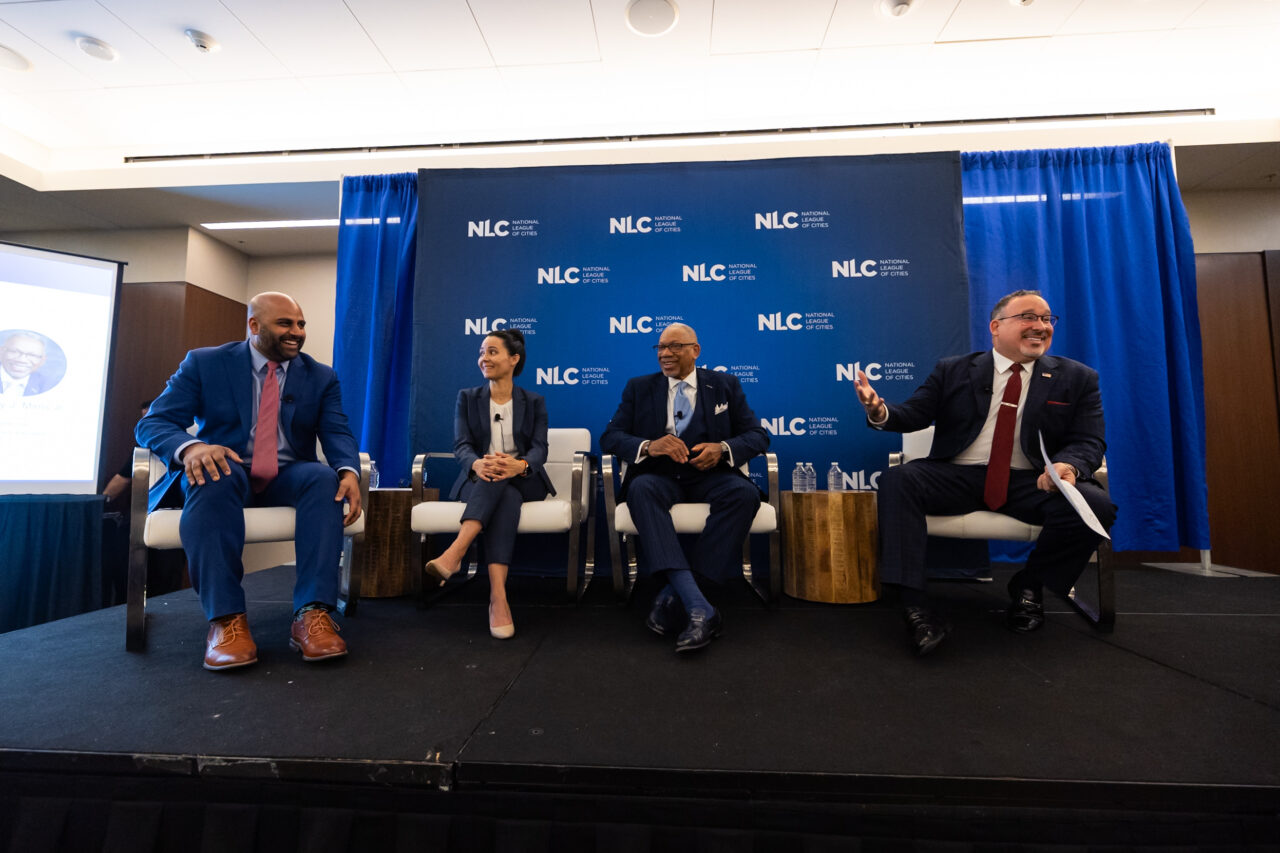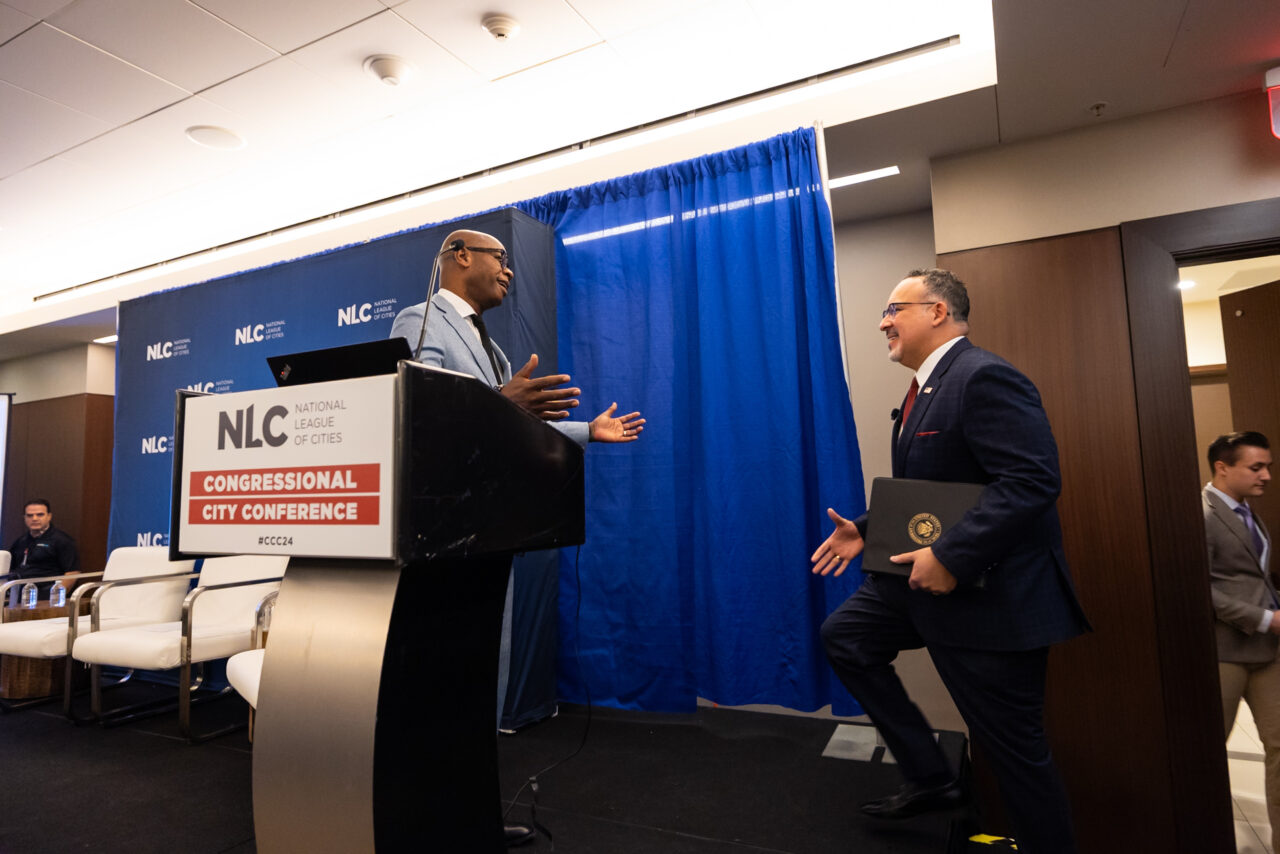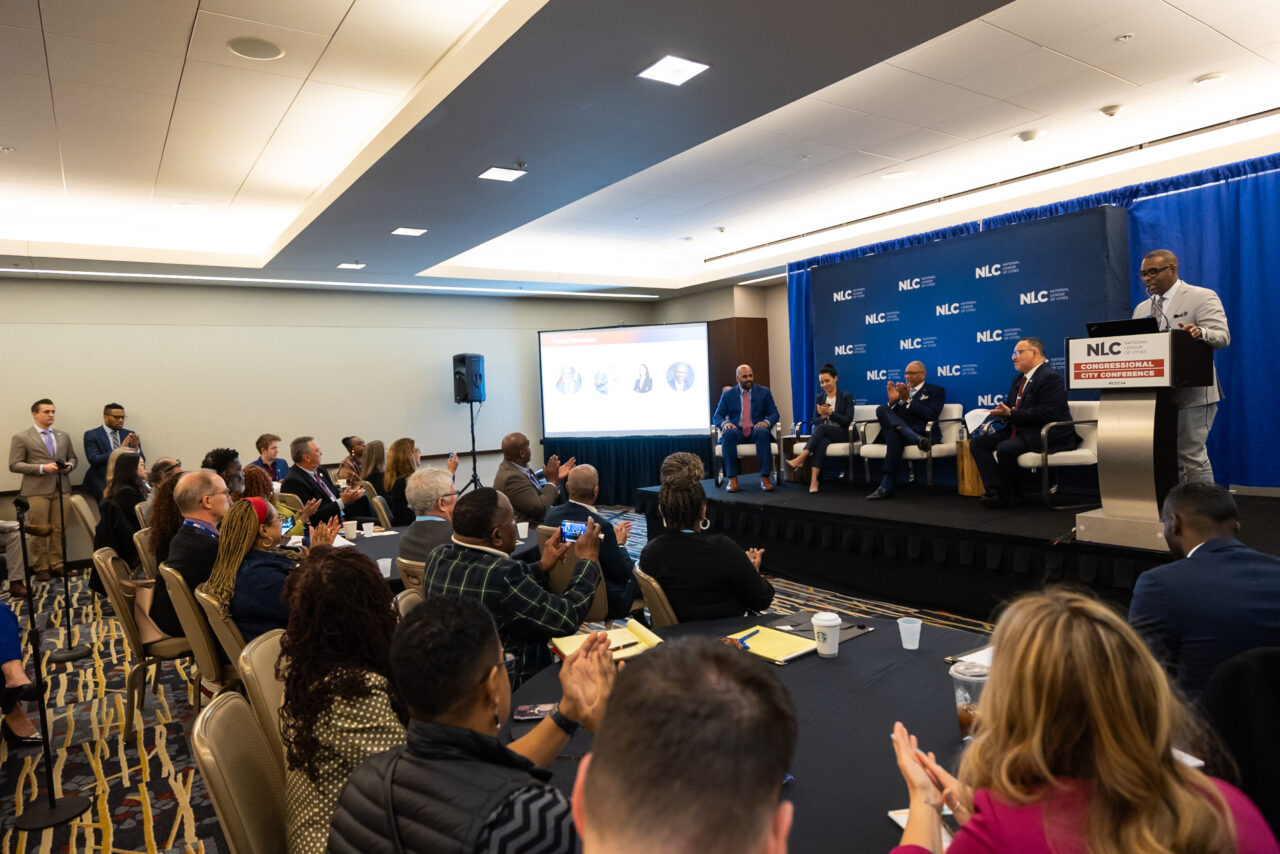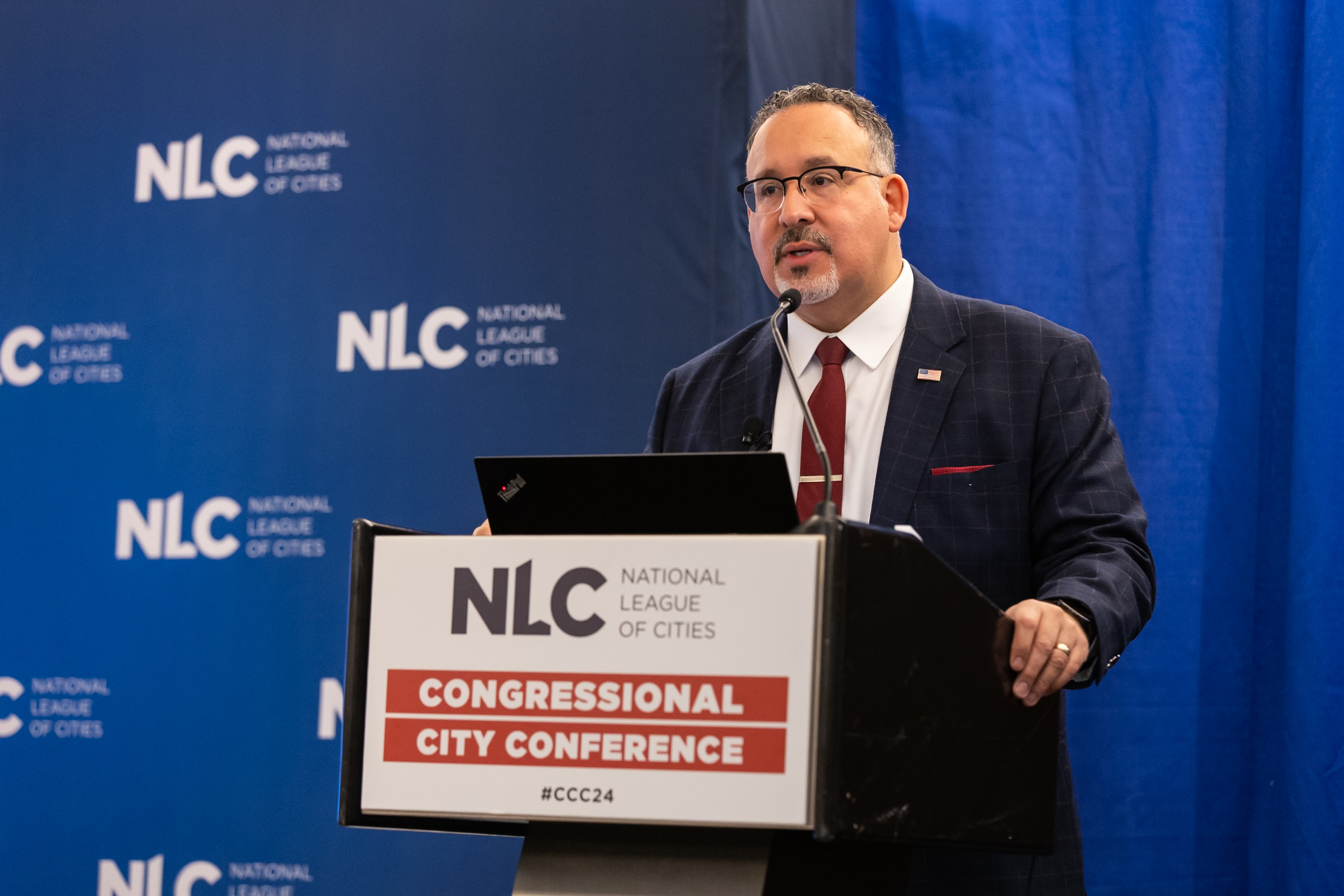Last month, The National League of Cities held its annual Congressional City Conference in Washington D.C. Mayors from throughout the United States joined together to hear from several federal agency officials, including the Secretary of Education, Miguel Cardona. At this bi-annual meeting of our Mayors’ Education Task Force (METF), Secretary Cardona gave remarks about the Department’s newest initiatives and then moderated a panel with METF chair, Mayor Mims of Dayton, OH, and Hartford, CT’s Mayor Arulampalam and Superintendent Torres-Rodriguez. Secretary Cardona indicated a strong desire to work more closely with mayors to keep a better pulse on local educational and workforce needs.
The Department of Education is increasingly focused on improving student well-being.
In 2021, 22 percent of students reported seriously considering attempting suicide, while 10 percent actually made a suicide attempt, a six percentage point and five percentage point increase, respectively, since 2011. Further, data from the CDC demonstrates that nearly all indicators of poor mental health and suicidal thoughts and behaviors have continued to rise since 2011.
Tackling this crisis is front of mind for the Department of Education, which recently opened applications for the School-Based Mental Health and Mental Health Service Professional Demonstration grant, making available $38 million in funding to both expand the number and diversify the pipeline of new mental health professionals.
In addition, Secretary Cardona urged mayors and state education agencies to use Medicaid reimbursement funding to employ more mental health professionals. Over the past year, the Department of Education has taken steps to simplify the reimbursement process for schools and, in January announced plans to award 20 states up to $2.5 million each for improvements to Medicaid and Children’s Health Insurance Program school-based services.

“If you are a mayor and want to have great citizens, you have to grow them.” – Mayor Jeffrey Mims, Dayton, Ohio
Cities and the Department of Education are seeing the benefits of investing in after-school and summer programs.
Between 2019 and 2022, chronic absenteeism increased from 14 to nearly 30 percent – meaning an additional 6.5 million students are missing at least 10 days of school per year. The number of students meeting this definition has continued to increase since the onset of the pandemic, impacting the safety and economic strength of cities.

Mayor Arulampalam shared how Hartford, CT, implemented a summer high school prep program as one way to curb chronic absenteeism and prevent an increase in opportunity youth (defined as youth and young adults who are not in school or working). Alongside academics, entering 9th-grade students start conversations about college and careers and learn about the long-term impacts of absenteeism. Students are paid to attend the program, giving them an incentive to show up and dissuading them from having to choose between work and school. The program’s funding is provided by the district, city, Capital Work Force Partners, and private donors.
President Biden also clearly sees the value of out of school time programs, recently inviting representatives from NLC, Tuscaloosa, AL, and Rochester, NY, to the White House to discuss summer learning opportunities. *The convening coincided with the government’s call for nominations for its Engage Every Student Initiative and a request for an additional $8 billion in their 2025 budget to support schools’ efforts to expand afterschool and summer learning [PDF pages 7, 8, 12, 16].
Intentional partnerships among mayors, local businesses, and school districts are creating successful pathways to good jobs for youth.
Programs that connect youth to good careers, such as Registered Apprenticeships and Career and Technical Education, are becoming more popular across the country, in part thanks to federal investments like the Bipartisan Infrastructure Law. During the Task Force meeting, Secretary Cardona specifically called out the country’s increase in teacher apprenticeship programs, currently approved in about two-thirds of states, as well as the department’s new $25 million investment in career-connected high schools.

NLC’s programs like Youth Excel and Good Jobs, Great Cities have demonstrated the importance of strong partnerships between municipalities, schools, and businesses to create impactful and effective workforce development programs.
“Managing is the problem of the day. Leading is thinking about where you’re going.” – Secretary Cardona, US Department of Education
About the Mayor’s Education Task Force
The task force was formed in 2012 by Mayor Chris Coleman of Saint Paul, MN, and Mayor Ralph Becker of Salt Lake City. The Mayors’ Education Task Force promotes partnerships between city hall, schools, districts, teacher unions, community and faith-based organizations, and business leaders to create local solutions that improve outcomes for the youth of their cities. The Task Force meets bi-annually in March at NLC’s Congressional City Conference and in November at NLC City Summit. These meetings connect mayors in a small, intimate setting where honest and constructive conversations occur. The task force is currently chaired by Mayor Mims of Dayton, OH.








